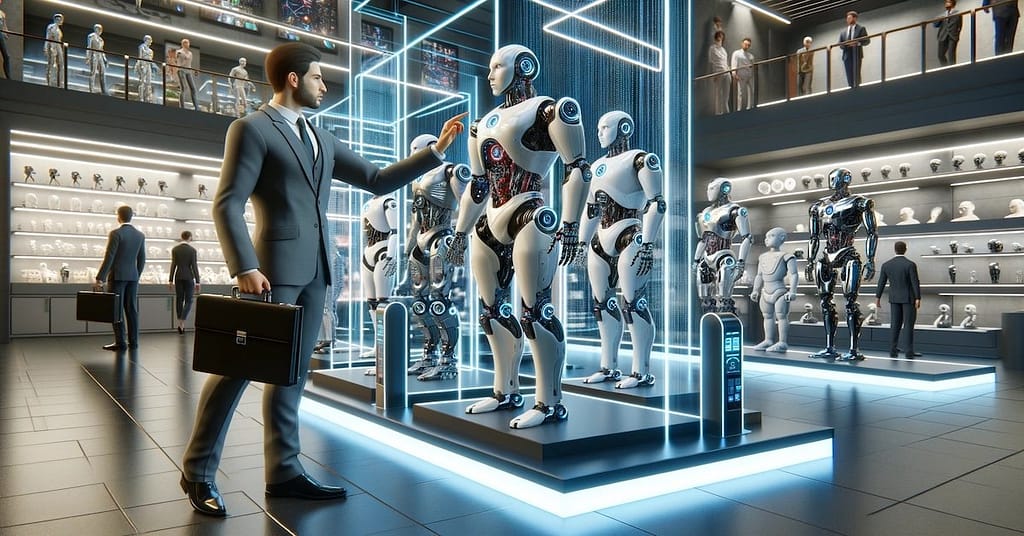Chatbots have revolutionized customer communications, making them faster, easier, and more efficient for businesses of all sizes. In this blog, we will explore the benefits of using chatbots and how they have evolved over time. We will also look at real-life examples of companies successfully using chatbots to enhance their customer interactions. This is the Chatbot Revolution 2024.
The Rise of Chatbots
In recent years, chatbots have gained popularity among consumers. According to a survey, 74% of consumers prefer chatbots for instant answers to their queries. This growing demand has led to a significant increase in investment in chatbot development, with over 50% of companies spending more on chatbots than traditional mobile applications. It is projected that retail spending on chatbots will reach $142 billion by 2024.
The Challenges of Early Chatbots
However, it hasn’t always been smooth sailing for chatbots. In the early days, chatbots struggled to handle the nuances of human language, leading to poor user experiences. Some chatbots, like Facebook’s M, required human assistance in 70% of interactions. The infamous case of Microsoft’s Tay, which had to be shut down within 16 hours of launch due to inappropriate behavior, further highlighted the limitations of early chatbot technology.
The Rise of Chatbots 2.0
Despite these setbacks, chatbots have come a long way. They are now omnipresent on websites, social media platforms, virtual assistants, and even SMS. Companies have embraced chatbots for specific use cases in marketing, sales, and customer service. These new-age chatbots, also known as Chatbots 2.0, have improved capabilities and can engage users in more natural and meaningful conversations.
The Evolution of Chatbot Technology
We spoke to LiveChat, a leading chatbot provider used by over 32,000 companies in 150 countries, to understand the factors behind the recent boom in chatbot technology. According to LiveChat, advancements in technology have played a crucial role in the development of chatbots. Users now have access to platforms that allow them to create bots without any coding knowledge.
Improved machine learning algorithms enable chatbots to process vast amounts of information in real-time. Many chatbots now utilize sentiment and context analysis, going beyond providing generic responses to common queries. These advancements have significantly enhanced the capabilities of chatbots and opened up new possibilities for businesses.
Real-World Examples
Let’s take a look at some real-world examples to understand how chatbots are transforming customer interactions:
1. Valley Driving School
Valley Driving School, located near Vancouver, used a chatbot to facilitate lesson bookings when their customer service representatives were unavailable. Since 2018, their chatbot has assisted over 12,000 customers with a customer satisfaction rate of 94%. The chatbot generated up to 30% additional leads for the company.
2. Nextdoor Burger Bar
Nextdoor Burger Bar witnessed a 300% increase in online orders after deploying a chatbot on their website. Customers could easily make reservations or place orders for delivery, enhancing the overall customer experience.
Getting Started with Your Own Chatbot
If you’re considering implementing a chatbot for your business, PandaDoc, a leading document automation and electronic signature service, offers valuable insights. According to PandaDoc, deploying a chatbot requires careful planning and continuous testing, just like any other aspect of inbound marketing.
Ensure you have dedicated personnel to manage and interact with the chatbot. This representative should be well-versed in your chatbot’s script and able to handle customer queries effectively. It is also essential to train your content marketing team, including writers, email marketers, and UX designers, on utilizing the chatbot script.
When crafting your chatbot’s script, focus on providing low-engagement calls-to-action that direct visitors to the content they are looking for. Avoid aggressive sales tactics and position your chatbot as a helpful concierge. Incorporate resources such as FAQs, knowledge bases, training materials, and support videos into your chatbot’s script.
The Future of Chatbots
While chatbots have come a long way, there is still room for growth. Advancements in natural language processing and other AI technologies will continue to make chatbots smarter every year. However, despite their increasing capabilities, chatbots are unlikely to replace human interactions entirely.
Wrapping Up
Chatbots have revolutionized customer communications, enabling businesses to provide faster and more efficient support. With advancements in technology and the ability to create chatbots without coding, companies can leverage chatbots to enhance their marketing, sales, and customer service efforts. If you’re ready to get started, HubSpot offers a free chatbot builder with proven templates to help you take your first steps into the world of chatbots.

RELATED POSTS
The Power of HubSpot AI: Enhancing Sales, Marketing
FREENOVE Ultimate Starter Kit for Raspberry Review
CanaKit Raspberry Pi 4 4GB Starter PRO Kit – Beginners and Pros
Editorial Note: We earn a commission from affiliate links. Commissions do not affect our editors’ opinions or evaluations.

